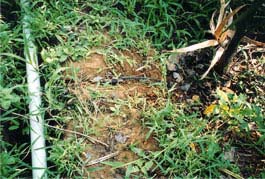Sanitation and Hygiene
Cost effective urinals established for Musiri Boys High School Trichy : A casestudy of UNICEF IITDelhis project SCOPE
Posted on 22 Nov, 2014 10:30 AMGuest post by: SCOPE
Forwarded to the Portal by: Ramesh Sakthivel
Per capita water availability to reduce by 2025 says Droplets eNewsletter from Everything About Water August 2011
Posted on 22 Nov, 2014 10:30 AMArticle and Image Courtesy: Everything About Water
Highlights from the August edition of Droplets e-newsletter published by the Everything About Water
- India: Per capita water availability to reduce by 2025
- WHO: New guidelines for safer drinking water supply systems
Water and sanitation challenges and the urban poor- Report of the consultation workshop held in December 2010 by India Wash Forum
Posted on 22 Nov, 2014 10:30 AM
On December 22, 2010, India WASH Forum organised a one day consultation workshop on pro poor urban water and sanitation at India Habitat Centre, New Delhi. India WASH Forum is a coalition bringing together interested stakeholders in the water and sanitation sector in the country.
Communal toilets in urban poverty pockets - A WaterAid report
Posted on 22 Nov, 2014 10:30 AMThis report published by WaterAid describes the findings of the study conducted in seven poverty pockets in Bhopal to look at patterns of use of communal latrine facilities. Much has been invested in building communal and public toilets and more resources are likely to continue to support this form of sanitation in dense urban areas in India.
However, there is no evidence available that is needed to quantify their potential contribution to reducing open defecation and faecal pollution in these environments, and identify those design features and management factors that encourage the highest usage rates by all household members. Also there is no information available on the impact of age and gender related differences in patterns of use.
Sanitation as a business : A new spin on the challenge of sanitation operation and maintenance A paper by Water for People
Posted on 22 Nov, 2014 10:30 AMThis paper published by the Water for People describes Sanitation as a Business, an innovative approach to operation and maintainance challenges in household sanitation improvements, by describing the case of the implementation of the approach in the context of Malawi, by Water for People. The paper argues that programs that build latrines have consistently struggled to have impact or reach scale, and have often distorted the market environment in ways that have undermined future sanitation development.
The paper emphasises the relevance of this approach in the context of developing countries such as India by stating that the world would not be able to achieve even half of the Millennium Development Goals for sanitation at current rates of installation and consequently is projected to miss the sanitation MDG by more than 700 million people. Among the twenty two percent of those without access to improved sanitation, the greatest challenge remains in Asia and India in particular.
Sanitation : The hygienic means of promoting health : Indian Journal of Public Health
Posted on 22 Nov, 2014 10:30 AMThis article published in the Indian Journal of Public Health highlights the importance of sanitation as hygienic means of dealing with health of populations and presents the history and the definition of sanitation and highlights t
Integrated Low Cost Sanitation Scheme Revised guidelines by the Ministry of Housing and Urban Poverty Alleviation 2008
Posted on 22 Nov, 2014 10:30 AMThe objective of the scheme is to convert or construct low cost sanitation units through sanitary two pit pour flush latrines with superstructures and appropriate variations to suit local conditions (area specific latrines) and construct new latrines where economically weaker sections household have no latrines and follow the in-human practice of defecating in the open in urban areas. This would improve overall sanitation in the towns.
Toilet manure in organic farming :An article by Varanashi Research Foundation
Posted on 22 Nov, 2014 10:30 AM Human faeces and urine (toilet manure) are a serious waste disposal problem especially in areas with high human population density. At the same time they are rich in nutrients that are essential to plants.
Human faeces and urine (toilet manure) are a serious waste disposal problem especially in areas with high human population density. At the same time they are rich in nutrients that are essential to plants.
The challenges of ecological sanitation in coastal south India : A case study of Kovalam town South Chennai Tamil Nadu A presentation
Posted on 22 Nov, 2014 10:30 AMThis presentation by Sekhar Raghavan, Director, Rain Centre, Chennai, India highlights the experiences and the challenges faced by Rain Centre in introducing ecological sanitation in the coastal town of Kovalam near Chennai, Tamil Nadu, India along with Coastal and Rural development Trust (CRDT), a small non profit centre based in Kovalam .
The coastal town of Kovalam was selected as a case because of its peculiar situation with its location in a fast developing peri-urban area in proximity to Chennai city characterised by good groundwater situation, adequate land and housing facilities, but with a glaring and urgent need and demand for toilets.





